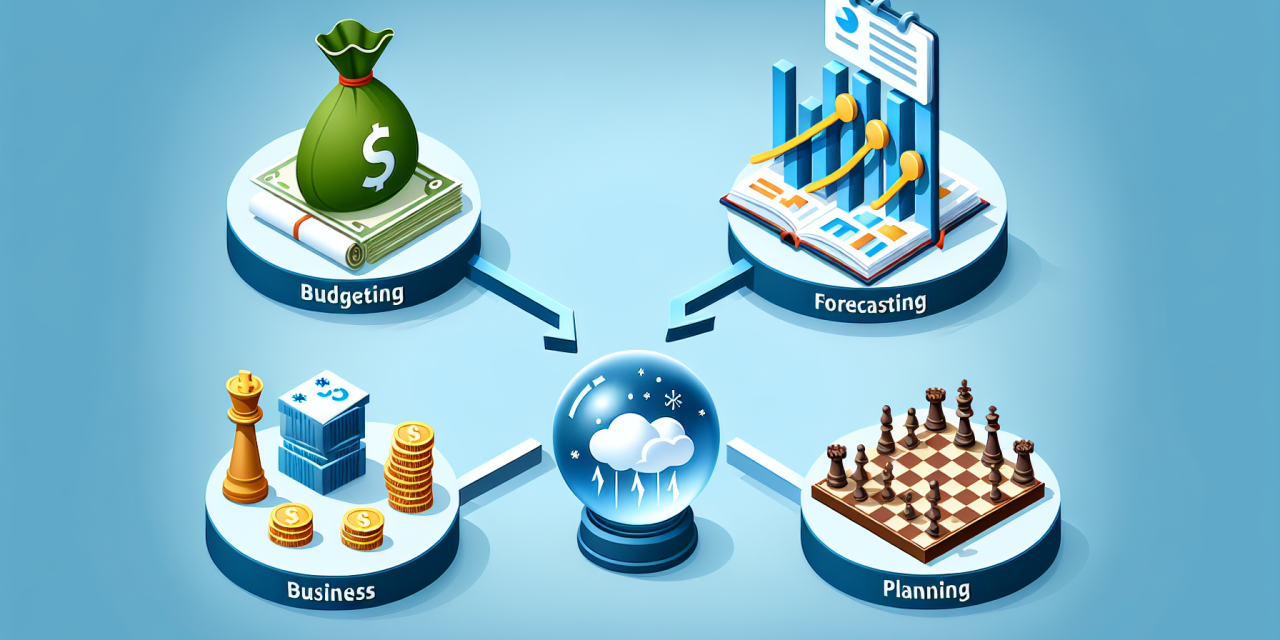Table of Contents
- Introduction
- The Importance of Integration
- Understanding Budgeting
- The Role of Forecasting
- Business Planning Uncovered
- How to Integrate These Processes
- Conclusion
- FAQs
Introduction
In today’s fast-paced business environment, integrating budgeting, forecasting, and business planning can significantly enhance an organization’s efficiency and success. The core of financial management revolves around these three elements. Yet, many companies often handle them in isolation, which can lead to discrepancies, confusion, and missed opportunities. This comprehensive guide will explore how these processes interconnect and the numerous benefits these synergies can bring. Furthermore, we’ll introduce key events like the Master Budgeting, Forecasting & Business Planning Conference, which serves as a vital platform for gaining insights and networking.
The Importance of Integration
Firstly, integrating budgeting, forecasting, and business planning promotes improved decision-making. Organizations that effectively align these processes can better predict future financial trends, allocate resources optimally, and develop long-term strategies that adapt as they grow. Moreover, accurate forecasts support the budgeting process by ensuring that financial resources are distributed appropriately, thus preventing overspending or underspending.
Enhanced Accuracy and Reliability
When these three components work in harmony, the overall accuracy improves tremendously. Businesses that integrate their budgets with forecasting can rely on more precise data. Conversely, when these aspects are handled separately, organizations face potential pitfalls, leading to flawed forecasts or unrealistic budgets.
Streamlined Communication
Another critical advantage of integration lies in enhanced communication across departments. Moreover, when teams share a common understanding of budgetary constraints and forecasted outcomes, they can foster a collaborative environment. This cross-departmental communication bolsters teamwork, improving overall efficiency.
Understanding Budgeting
Budgeting is a pivotal process that helps organizations plan their finances for the forthcoming period. Essentially, it acts as a financial blueprint that guides both short-term and long-term decisions. Moreover, a well-structured budget allows businesses to allocate resources, manage cash flows, and set measurable financial goals.
Types of Budgets
Generally, there are various types of budgets that organizations can adopt based on their unique objectives. These include:
- Operating Budgets: Focus on revenues and expenses incurred during normal operations.
- Capital Budgets: These budgets help manage long-term investments or capital expenditures.
- Cash Flow Budgets: These ensure that an organization has adequate liquidity to meet its obligations.
Best Practices for Effective Budgeting
To make the most of budgeting, organizations should consider implementing best practices. Regularly reviewing and adjusting the budget according to market conditions is crucial. Additionally, businesses should involve various departmental heads in the budgeting process to incorporate diverse perspectives and expertise.
The Role of Forecasting
Forecasting significantly impacts how organizations anticipate future performance based on historical data and trends. It encompasses the method of predicting sales, revenue, and other critical financial metrics. Importantly, these projections enable businesses to set achievable objectives, thus enhancing their operational strategies.
Types of Forecasting
Similar to budgeting, forecasting consists of various techniques, including:
- Qualitative Forecasting: This technique relies on expert opinions and intuitive judgment to predict future trends.
- Quantitative Forecasting: Engages numerical data analysis, making use of statistical methods to deduce future outcomes.
Why Forecasting Matters
The benefits of forecasting extend beyond mere predictions. It empowers organizations to identify potential risks, seize opportunities, and strategically plan for growth. For example, an effective forecasting model can allow a company to prepare for market fluctuations by adjusting production levels accordingly.
Business Planning Uncovered
Business planning involves setting the overall strategy for an organization. Importantly, it serves as a map that outlines the company’s direction, goals, and the means to achieve them. A comprehensive business plan incorporates budgeting and forecasting, ensuring that all components align with the organization’s vision.
Elements of a Solid Business Plan
A well-structured business plan should include:
- Executive Summary: A brief overview highlighting critical goals and processes.
- Market Analysis: Research on industry trends, target markets, and competitive landscape.
- Financial Projections: This section typically combines budgeting and forecasting insights to project future financial performance.
Benefits of Effective Business Planning
Through solid business planning, organizations can clarify their objectives, identify challenges, and plan for growth efficiently. Furthermore, a clear business plan enhances investor relations and aids in persuading stakeholders of their potential value.
How to Integrate These Processes
Now that we’ve covered budgeting, forecasting, and business planning, let’s delve into integration techniques. By synchronizing these functions, organizations can promote more effective results across the board.
Establish a Unified Framework
Companies should initiate integration by designing a unified framework that serves as a foundation for the budgeting, forecasting, and planning processes. Therefore, developing a standardized approach ensures consistency and accuracy among teams.
Utilize Technology and Tools
Moreover, investing in technology can greatly enhance the capabilities of budgeting and forecasting. Various software solutions can automate data collection, which allows for real-time insights and reporting. Tools like ERP systems can provide comprehensive financial views, aiding in seamless integrations.
Incorporate Regular Reviews and Updates
Scheduling regular reviews can improve the quality of integration. By frequently examining budgets and forecasts, organizations can adjust to market changes effectively. Adaptability is crucial, especially in a rapidly shifting business environment.
FAQs
Q1: Why is it essential to integrate budgeting, forecasting, and business planning?
Integrating these processes improves accuracy, enhances communication, and leads to better decision-making.
Q2: What are the best practices for effective budgeting?
Best practices include regular reviews, involving various departments, and incorporating flexible adjustments based on market conditions.
Q3: How can technology improve budgeting and forecasting?
Technology can automate data collection, provide real-time insights, and connect various tools for better overall efficiency.
Q4: Where can I learn more about improving financial management skills?
You can gain more insights on essential finance management skills by visiting Unlocking Financial Success: Mastering Essential Finance Management Skills.
Conclusion
In conclusion, integrating budgeting, forecasting, and business planning is vital for organizations aiming for sustained success. The benefits are substantial, leading to improved accuracy, enhanced collaboration, and ultimately, better financial performance. By embracing these principles, businesses position themselves to adapt effectively to market changes and achieve their goals. Don’t miss out on invaluable opportunities and insights—attend the Master Budgeting, Forecasting & Business Planning Conference to deepen your understanding and expand your network! For additional resources to enhance your operational capabilities, explore these articles: Maximize efficiency and knowledge at the Hydrocarbon Production Operations Training Conference, Effective Heat Transfer: Exploring Augmentation Techniques in the Process Industry, Essential Insights into Mechanical Technology Workshop for Engineers, and Exploring the Dynamics of Employee Relations: Motivating Engagement, Addressing Grievances, and Fostering Discipline.





